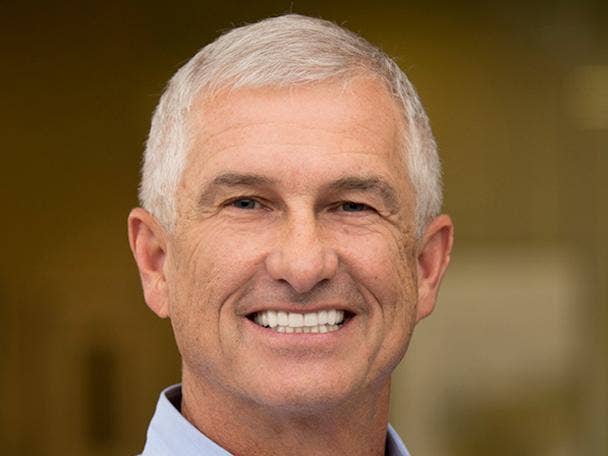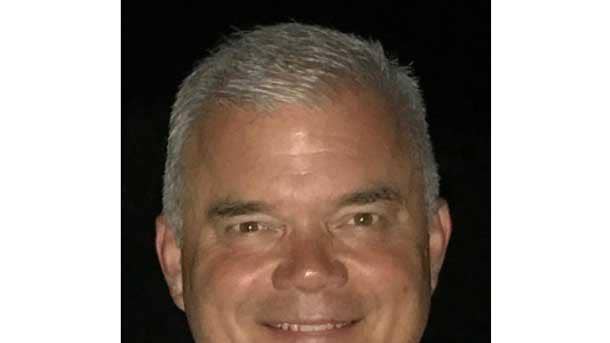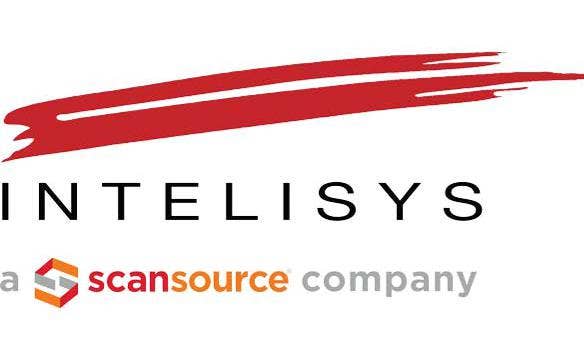ScanSource Gets New President, Reports Q2 Growth: 5 Things To Know
ScanSource CEO Mike Baur surprised the analysts on its quarterly financial conference call not only with unexpectedly strong revenue and earnings figures, but with the promotion of Chief Revenue Officer John Eldh as the company’s new president.

Great News On Multiple Fronts
ScanSource Tuesday reported its second fiscal quarter 2021 financial reports, and the numbers told a story of growth despite headwinds caused by supply constraints. CEO Mike Baur (pictured), Chief Revenue Officer John Eldh, and Chief Financial Officer Steve Jones used the company’s quarterly analyst conference call to not only report strong growth in revenue and earnings, but to increase guidance for the full fiscal year 2021 based on the strength of the IT distributor’s hybrid distribution strategy which combines traditional hardware sales with cloud, SaaS, and connectivity products and services into broad solutions.
But revenue and income were not necessarily the biggest news for Greenville, S.C.-based ScanSource. Baur used the call to also announce that Eldh, who has been central to driving ScanSource’s hybrid distribution strategy, was promoted to company president, giving him a higher profile from which to expand that strategy.
“We’re very excited about the our hybrid distribution strategy, and are really leveraging it to accelerate growth for partners and suppliers across hardware, SaaS, connectivity, and cloud services,” Eldh told CRN in a separate conversation after the financial conference call.
Baur, Eldh, and Jones got together with CRN to talk about all that is going on at ScanSource. For a look at what is driving the IT distributor, click through the slideshow.

ScanSource Gets A New President
Baur, in his prepared remarks, unveiled the promotion of John Eldh (pictured), until now the company’s chief revenue officer, to the position of president. Eldh, who joined ScanSource two-and-a-half years ago, has been driving the distributor’s device, digital, and cloud businesses, with a SaaS background that will help him drive ScanSource’s next phase of profitable growth, Baur said.
“As President, John will drive and champion our hybrid distribution growth strategy and communicate this message to our key stakeholders, including employees, sales partners, suppliers and investors,” he said.
After the conference call, Baur told CRN that ScanSource has no plans to hire a new chief revenue officer, and that Eldh will manage both roles simultaneously.
“We have no plans to backfill the role,” he said. “[His] official title will just be president.”

Very Good Quarter
ScanSource Tuesday reported a very strong second fiscal quarter 2021, which ended December 31, with net sales of $864.4 million, up 6.6 percent over the $810.9 million the distributor reported for its second fiscal quarter 2020.
That included net sales of $496.0 million in net sales for the company’s specialty technology solutions business, which was up 9.2 percent over last year. ScanSource also reported sales of $367.4 million for its modern communications and cloud business, which was up 3.3 percent. That latter figure included its Intelisys connectivity and cloud business, where sales increased 14.1 percent over last year.
ScanSource reported GAAP net income of $23.2 million, or 89 cents per share, more than doubling the $11.1 million, or 43 cents per share, it reported last year. On a non-GAAP basis, the company reported net income of $26.4 million, or $1.02 per share, up from last year’s $16.5 million, or 65 cents per share.

About That Intelisys Business: ScanSource’s Hybrid Distribution Strategy
ScanSource in mid-2016 acquired Intelisys as a way to expand into the fast-growing telecom business and give its channel partners a way to expand their offerings. That acquisition made ScanSource unique in the distribution business by giving partners a way to combine traditional products and services with those of Intelisys into new solutions as part of what it calls its hybrid distribution strategy.
That strategy, with is driven by Eldh, is paying off for ScanSource, Eldh told CRN.
“We‘re very excited about the our hybrid distribution strategy, and are really leveraging it to accelerate growth for partners and suppliers across hardware, SaaS, connectivity, and cloud services,” he said. “And really, when I think about hybrid, I really think about a couple things. First of all, connecting devices to the cloud. And also enabling our partners to sell how they choose to sell based on end-user requirements. And so with all of the assets that we have put together over the last three to five years, we really feel that we’re in a great position to lead in hybrid distribution and enabling our partners to win.”
ScanSource’s hybrid distribution strategy is unique among distributors, Eldh said.
“We think we have resources that nobody else has,” he said. “Just think about Intelisys and our Intelisys business and the whole agency model. We‘re the only, if you will, hybrid distributor in the marketplace that has access to and is offering all these cloud services. And the beautiful thing for us is, this helps ensure continued growth and success of our agent community, but also enables our VARs to really move into a ‘hardware-plus’ or a ‘hardware-and’ strategy and be able to offer more cloud services to drive a full solution, including cloud and hardware.”
That hybrid distribution strategy really showed its strength during the COVID-19 pandemic, Eldh said.
“At the outset of COVID, so many of our VARs were initially caught flatfooted because they were traditional hardware providers,” he said. “And with the advent of COVID, they needed to be able to move their customers based on customer demand to cloud services. And being a part of this community, we were able to enable them and put them in position to not only continue to win in hardware, but also with cloud services and connectivity and the like. And so that‘s a big win for us, and we see continued acceleration of that movement to a hardware-plus mentality from our partner base.”

Managing Supply Chain Issues
Eldh told CRN ScanSource continues to see challenges in the market as overall lead times have extended.
“At the same time, because of our level of specialization, we‘ve been able to navigate it,” he said. “And [we are] leveraging our balance sheet to be able to do strategic inventory investments to put us in a position to enable our customer base with supply.”
Going forward, Eldh said, ScanSource expects to make supply chain constraints less of an issue by working closely with the two sides of its business: its partners and its suppliers.
“With our customers, which are the partners, to really understand their forecast and their requirements based on the end-user demand,” he said. “And also staying very closely aligned with our suppliers to ensure that that we can get the inventory we need to satisfy demand. And we‘re happy with how we’ve navigated that so far, and expect to continue in the back half [of the fiscal year].”

Increasing Fiscal Guidance
During his prepared remarks, Baur said ScanSource is confident in its business model and ability to execute, and as a result is raising its full fiscal year 2022 outlook with expectations of net sales growth of at least 7 over fiscal 2021, with adjusted EBITDA of at least $148 million.
Baur said the foundation of ScanSource’s hybrid distribution strategy is helping its suppliers and channel partners meet accelerating growth in user requirements by providing hardware plus services, SaaS, and other value added offers.
Steve Jones, ScanSource’s chief financial officer, told CRN that the company is confident in its new fiscal 2022 outlook because of changes before it revised its guidelines.
“Let me take you back to when we set the guides,” Jones said. “We were coming into an unknown supply chain environment, really unsure of how we were going to manage through that. Really the first half [of the fiscal year] has given us a lot of confidence that we have the ability to do that. Now, are things getting worse or better? They‘re still out there. But our ability to manage the first half really gave us the confidence to up our full-year guidance.”